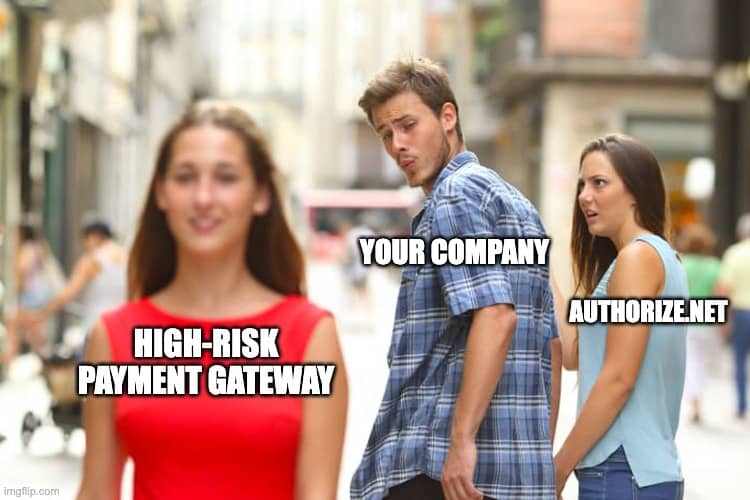How Are Merchant Fees Calculated?

As a business owner, you’re always looking for ways to reduce operating costs. One way to do this is by understanding how to calculate merchant fees and ensure you get the best deal possible.
Merchant fees are all the charges levied by credit card companies, payment companies and banks for processing credit card transactions via your payment processor. Although that sounds simple, a processing statement may show countless different fees. You may need help understanding what you’re paying for.
The fees charged by merchants can vary greatly depending on the type of merchant account, the payment processing company and the available services and payment options you use. No matter what type of account you’re considering, it’s essential to understand how to calculate your fees. A better understanding of the fees may also help you negotiate with your merchant service provider to get the best rate possible. In this article, you’ll gain insight into merchant account fees and how to reduce them.
If you’re looking for a provider of high-risk merchant accounts that offers attractive rates, Zenti can help you!
Merchant Account Pricing Structures
Merchant accounts have different pricing structures. They start at straightforward transaction-based flat pricing structures and range to complex interchange-plus pricing models with various additional types of fees.
Flat Pricing
Flat pricing is the most straightforward way of merchant account pricing. Prominent vendors and credit card networks typically use it.
With flat pricing, merchant fees are a small percentage of the total transaction amount. The per transaction fee is usually a percentage of the transaction amount plus a flat fixed fee per transaction. For example, the flat pricing rate is 2.99% of the transaction amount plus a 0.20 USD fee per transaction. It is the standard pricing model for flat-fee merchant services.
Flat-fee-based pricing is rare. If offered, it’s typically expensive and comes with minimum fees. Therefore, it’s not ideal when you’ve got many small transactions. More often, the total percentage charged may vary depending on the type of card used, the merchant category and the processor.
Some processors charge a flat rate fee per transaction rather than a percentage. Calculating flat-rate pricing model-based merchant fees is straightforward: For example, if you run a 100 USD transaction through a merchant account, the merchant fee is 3.19 USD in the example above.
Tiered Pricing
Tiered-pricing models group different types of cards and card member associations into different ‘tiers.’ Typically, there are three rates: qualified, mid-qualified and non-qualified. Processors reserve low-priced qualified rates for businesses that process a high number of transactions with low risk. In contrast, processors charge mid-qualified rates, often a few percentage points higher than qualified rates, for transactions made with rewards cards or cards that offer cash back.
One way to quantify the risk is by looking at the average transaction amount and the total number of transactions processed by the merchant over a period of time:
- High Risk / Level 1 Pricing: Merchants with high average transaction amounts and/or high total number of transactions are ‘high-risk’ and pay higher level 1 pricing.
- Medium Risk / Level 2 Pricing: Merchants with medium average transaction amounts and/or medium total number of transactions are ‘medium-risk’ and pay level 2 pricing.
- Low Risk / Level 3 Pricing: Merchants with a low average transaction amount and/or a low total number of transactions are ‘low-risk’ and pay level 3 pricing.
So depending on the card a customer uses, one of three rates applies to that transaction. It may include gift cards, reward cards and American Express or MasterCard. Suppose you’re currently on tiered pricing with your payment processor. In that case, it may be worth analyzing your customers’ payment habits to see if switching to different pricing structures would save you money.
Interchange Pricing
The most detailed approach to pricing is interchange pricing. In this case, different processing fees apply depending on the card and how it was run.
The interchange rate is the fee merchants must pay to the card-issuing bank for each credit and debit card transaction. The fee depends on the risk associated with different payment forms and types of transactions. For example, generic transactions like grocery shopping don’t invoke high interchange rates. In contrast, payments for high-risk transactions (e.g., online gaming) are more expensive due to the high-risk nature of those transactions. Frequent chargebacks may occur, making it more difficult and costly for merchants to process such transactions.
In-person transactions directly at the point-of-sale (POS) are also less fraud-prone than e-commerce transactions, thus costing a lower interchange fee. Interchange-plus pricing is another pricing structure that levies interchange pricing and additional fees.
Categories of Merchant Account Fees
Depending on the different pricing structures discussed above, the calculation of merchant fees varies by the relevant account. One can broadly group merchant fees into three broad categories:
- Transaction fees: Based on one transactional card purchase.
- Account fees: Charged on top of the interchange.
- Incidental fees: Depend on ‘incidents,’ including chargebacks and other failures.
In addition, different types of merchant fees can vary depending on the merchant account provider you’re using. Payment processors have various additional fees, some of which one vendor charges but not another.
The following additional fees are levied by your payment processor, depending on their pricing structure:
- Transaction fees: A flat fee charged for each transaction.
- Authorization fees: A flat fee each time a customer’s card is authorized.
- Monthly fees: A catch-all category for various setup fees that aren’t covered anywhere else.
- Assessment fees: A broad category of fees used for assessing an application.
- Chargeback fees: A cost typically covered under incidental fees, but there may be additional fees based on the level of chargebacks.
- Batch fees: A flat fee for each batch of transactions.
How to Calculate Merchant Account Fees?
As you can see, there’s no straightforward way to calculate merchant account fees and compare them across different providers. As a result, different businesses pay different rates for credit card processing, depending on various factors. The best way of understanding your merchant account fees is by calculating your effective rate. You can do this by dividing the total of your monthly payment processing fees by the volume of your transactions.
To compare different providers, you need to understand their pricing structure in detail. It’s easy to compare different accounts based on a flat-pricing structure but difficult once it comes to interchange pricing and pricing for high-risk payment processing. What is important is that you partner with a payment processor that accommodates how you conduct business and offers a suitable fee structure. It’s also essential to compare the options that payment processors offer. In that way, you can find the most attractive option for you, both in terms of fee structure and in terms of your use case and customers.
Zenti offers high-risk businesses an easy and attractive offer to get approved for merchant account services.
How to Calculate Fees on Credit Card Payments?
Credit card fees are one of the fees on your merchant account covered under transaction fees. These fees go to the Credit Card Network, for example, Visa, Mastercard or Discover. In addition, the Credit Card Issuer, such as Chase or another bank, may charge additional fees.
Calculating credit card fees is also essential to understand your merchant fees. You’ll need to know the rate your credit card processing company charges for processing payments and associated fees with your merchant account.
Large Credit Card companies like Visa, Mastercard and Discover typically have flat-rate pricing, so you’ll pay the same percentage no matter how much you charge. Credit card interchange fees range between 1.15% - 3.25% depending on the Credit Card network. The Credit Card processing fee doesn’t include any other merchant account fees; these come on top. To calculate your credit card processing fee, multiply the total amount of your charge by the processing rate. For example, if you’re charging a customer 100 USD and your processing rate is 3%, your credit card interchange fee would be 3 USD.
How You Can Reduce Your Merchant Fees
If you’re looking to reduce your merchant fees, you can do a few things.
First, be sure to understand your use case and customers. If you’ve got a high-risk use case, such as selling CBD products online, you should consider working with a provider specializing in merchant accounts for CBD eCommerce. You can reduce your fees and penalties for chargebacks by choosing the right provider.
Second, try to negotiate a lower rate with your current provider. And lastly, be sure to keep your account in good standing by staying current on your payments and avoiding any excessive fees.
By following these ten additional tips, you may help reduce your overall merchant fees and keep more money in your pocket.
Ten Tips for Saving on Merchant Fees:
- Shop around for a payment processor that charges lower fees. There are a number of reputable processors out there, so take your time to compare rates and fees before selecting one.
- Negotiate with your processor. If you’re processing a large volume of transactions, you may be able to get a lower rate by negotiating with your processor.
- Use a service that bundles your merchant account with other business services, such as accounting software or bank accounts, to save you money.
- Avoid merchants that charge extra for using a credit card. While this may be convenient, it’s likely costing you more in fees.
- Ask for discounts or waived fees for things like account setup, early termination or monthly minimums.
- Increase your volume of sales to qualify for lower per-transaction rates.
- Use a mobile payment processor, which typically has lower fees than companies offering traditional card readers.
- Use a processor that offers batching. Your processor will hold onto your payments until a certain number has been collected, then process them all at once, which can save you money on per-transaction fees.
- Use a payment processor that offers discounts for bulk payments. You may reduce fees levied on many small transactions.
- Ask about other ways to save. Some processors offer discounts for businesses that use their services in other ways, such as setting up direct deposit or using a specific payment gateway. Be sure to ask about any available discounts to take advantage of them.
Looking for an Affordable High-Risk Payment Processor?
Zenti specializes in cost-effective high-risk payment processing for any kind of small business or large business. If you’re struggling to get accepted to process payments via prominent PCI vendors such as PayPal, Stripe, Square or other payment processors, Zenti can help. Get in touch for a free initial consultation!
Read Next

Find out whether Authorize.Net works for high risk merchants, what restrictions you might face and how to get approved.

Get expert advice on selling CBD products on Shopify, including compliance tips and setting up secure payment options.

Find out why Square may deactivate merchant accounts and steps to resolve issues and maintain uninterrupted payment services.
Need a High-Risk Merchant Account?
Disruption-free payment processing at the best price for your situation, guaranteed.
Get Free Guidance Now!